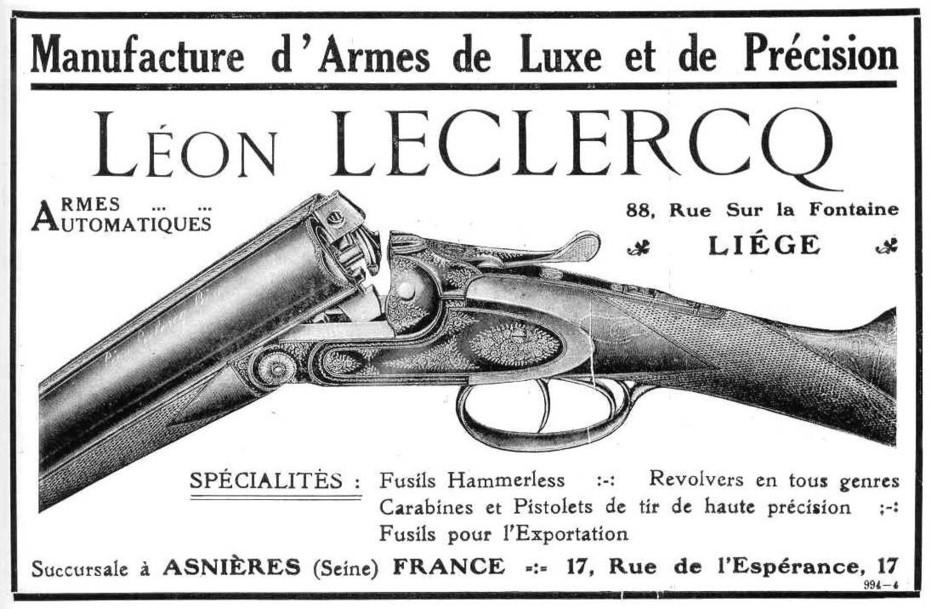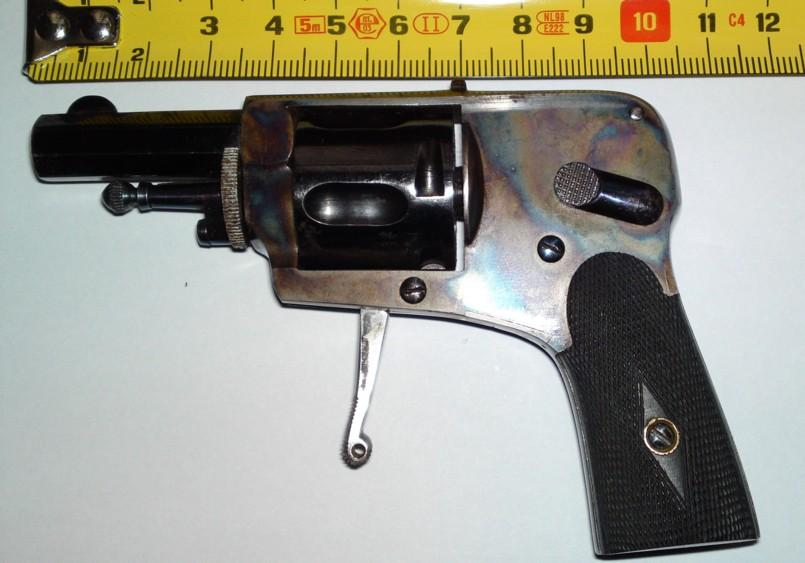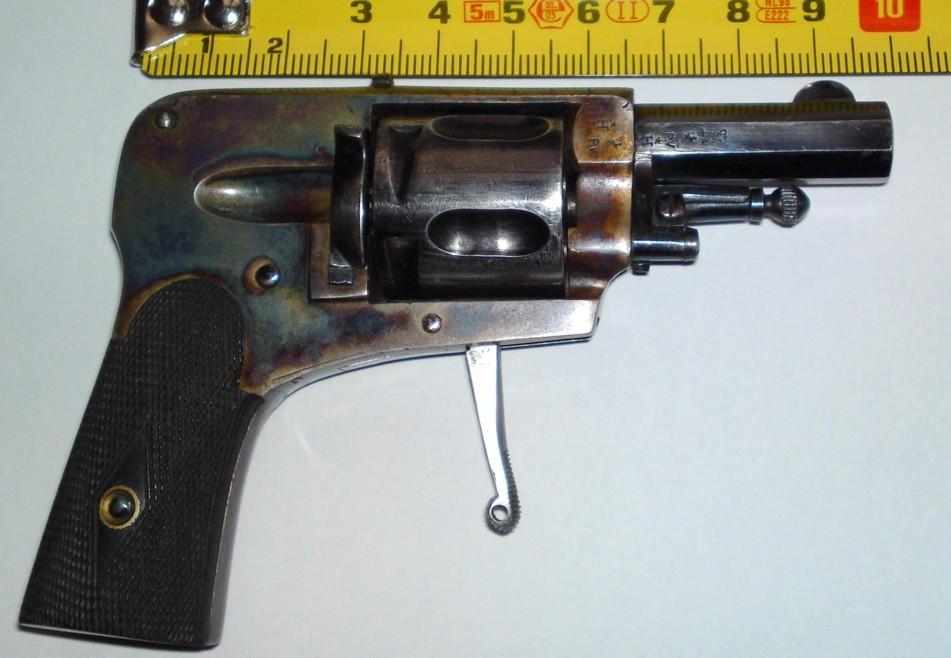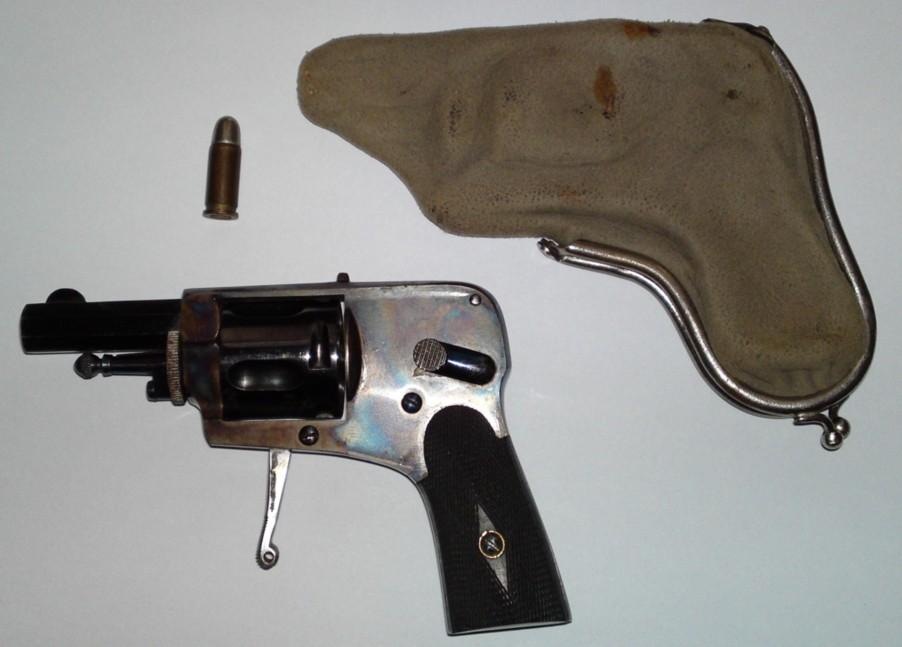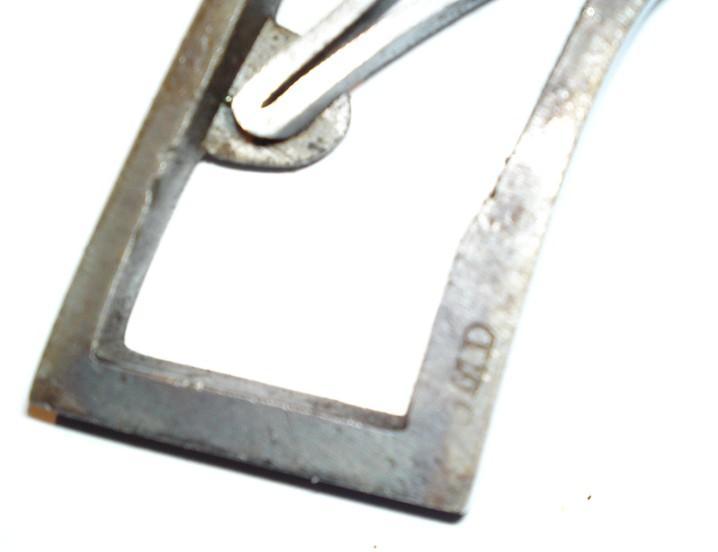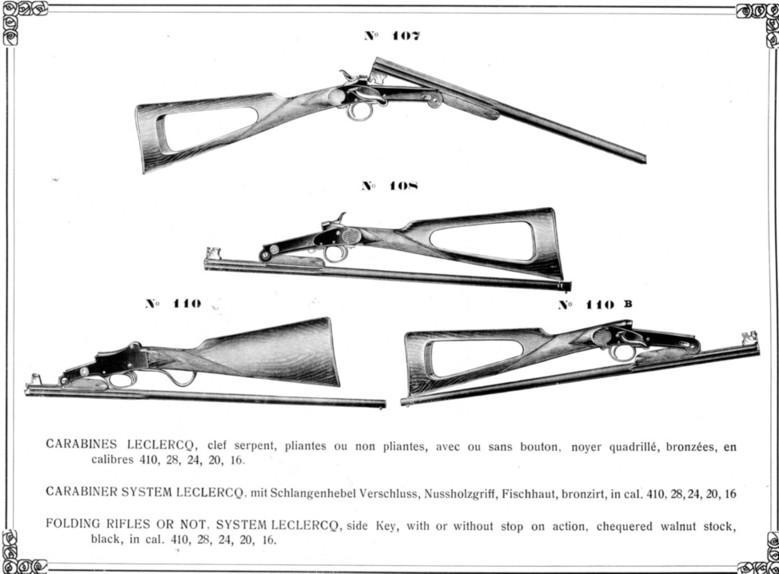Some of the most beautiful work of this craftsman, and many others, are in this book “Liège Gunmakers through their Work. 1800 - 1950”.
For more detail see: LIEGE GUNMAKERS
Léon LECLERCQ
Rifle or
rifle (rifled bore?) of manufacturing of Liège of before 1877!
The
weapon carries the punches of the proofhouse of LIEGE, namely:
ELG* in a
vertical oval:
final acceptance, of use of 1846 to 1893.
V crowned:
countermark of the controller of use of 1853 to 1877.
Peron:
inspection, of use of 1853 to our days.
The
weapon also carries the following marks:
L J
crowned:
marks of manufacturer (of Liège) unknown???
L.L.
: mark of subcontractor unknown of Liège (LECLERCQ Leon??)
R in a
circle:
could be a mark (armed Belgian?) of a company of bomb disposal experts???
J L
crowned in a circle:
unknown significance.
INVENTION
P.L. N° 82 GEVELOT:
Jules-Felix GEVELOT was a French industrialist (1826/1904) owner of a factory of
cartridges with Isy Moulinaux!
BELLOW
BUTTSTOCK? : signification please?
GG
This weapon is a rifle of which the patent of improvement at summer deposited in
Belgium under number 20241 by My sieurs Lagrèze & Pidault on February 27th,
1867, patent which makes following several patents deposited both in France and
in Belgium.
Max


Invention
P.L. N° 82 Gevelot means that the invention is of P(idault) L(agréze) and that
the manufacturer is Gévelot.

Pidault Martial
Arquebusier in Paris 1842-1870.
Patents
in France on June 13th, 1842 for the invention of a cylinder head turning on an
axis (This rifle was manufactured by Gevelot), on June 16th, 1842 for a rifle
with loading by the cylinder head and on July 12th, 1848 for simplification of
the turntable.
He is
also holder of the patent of the revolver Pidault é& Tevis deposited on May
16th, 1856, for the revolver Pidault & Cordier péposé on May 28th, 1860 (known
under the name “Raphaël Revolver”), and finally for a rifle with loading by the
cylinder head Lagrèze & Pidault on February 25th, 1867.
This last
patent is that of this rifle!
Alain (Webmaster)







Léon LECLERCQ
Here is a very classic
folding rifle Leclercq system, probably by
Léon Leclercq,
active between 1908 and 1940 (Cf
LL crowned).
See especially the catalogue at the end of the section.
The markings
FL n°3: the type of ammunition for which the weapon was
built, in this case the 6 mm “precision” pointed head, as appears from the
document (German) below; but the owner claims that the inside diameter of the
barrel is 8 mm...
H under star: countermark of a controller, since 1877;
Peron: inspection since 1853;
ELG on star in crowned oval: accepted since 1893.
However, caution must be exercised with regard to the
Leclercq system rifles/carabines: it has not yet been possible to determine
precisely WHO is the inventor of this system, since the patent relating to it
has not yet been found.
But:
1° the Industrial Property Office has “lost” patents,
for various and varied reasons;
2) not everyone has the intelligence, the time, the
money, the presence of mind to file a patent;
3° there may be no patent for this “Leclercq system”.
However, thousands of weapons
belonging to the “Leclercq system” have been produced, in a multitude of
calibres, with filled or hollowed crosses. And so
Léon Leclercq
also sold some, see his catalogue. There’s the initials
LL
on that rifle, but is that him? It’s possible, but it’s not certain...
GP avec l’aide de HPH et PHL.










Léon LECLERCQ
This weapon is without question of origin of Liège.
It is about a revolver with central percussion and box frame called PUPPY compared to its small size. PUPPY is the diminutive of BULLDOG.
The weapon is of uneven-hammerless type.
The barrel is with 8 sides with front sight in half-moon.
The cylinder (5 or 6 blows?? in gauge 6,35??) is grooved.
The loading is practiced by a right side door, dropping thanks to the action of an internal spring.
Unloading is done using the rod swivelling on an axis.
A safety is placed on the left side of the carcass.
The trigger without trigger guard is right with the swell end and opening.
It is folded up under the carcass to facilitate the setting out of pocket or case.
The stick consist of two plates out of wooden (walnut?) squared connected by a transverse screw and two rivet washers.
Punches
The weapon carries the punches of the proofhouse of Liege, namely:
R crowned: rifled bore, of use of 1894 to 1968.
H spangled: countermark of the controller, of use of 1877 to 1968.
PV surmounted of a stylized lion: test with the powder without smoke, of use of 1898 to 1968.
If you look on the internal face of the barrel by raising the door, you will notice certainly a punch representing letters E.L.G on star in a crowned oval.
This punch represents valid final acceptance since 1893.
The manufacturer
Many of these small weapons of great consumption did not carry marks of manufacturer. On the amounts, we notice several marks (3?) only one is really readable is crowned LL!
Several arms manufacturers of the end of the XIX century, beginning XXe carried these initial such as for example Leon LECLERCQ, arms manufacturer of Liège, registered with the proofhouse of 1908 to 1940, it was registered street on the fountain, 88 in LIEGE. Nothing states however that it made use of this mark. It sold nevertheless revolvers of all types!
Appendix: a publicity of this arms manufacturer.
GG
